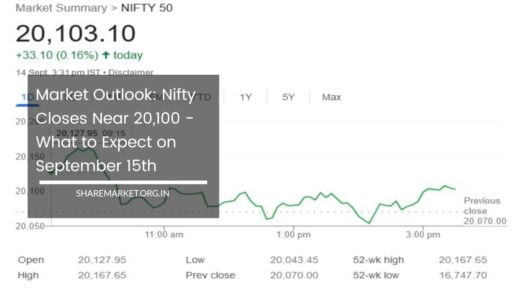What is Option Trading in Share Market

What is Option Trading in Share Market
What is Option Trading in the Share Market?
Options trading represents a sophisticated and versatile method of engaging with the financial markets. It provides investors with the right, though not the obligation, to buy or sell an underlying asset at a predetermined price within a specified timeframe.
This flexibility, coupled with the potential for significant returns, has made options trading a popular choice among both seasoned and novice investors.
However, it is crucial to grasp the complexities of options trading before committing, as it involves inherent risks and requires a thorough understanding of its mechanisms.
Understanding Options
At its core, an option is a financial contract between two parties: the option buyer and the option seller (also known as the option writer).
The contract grants the buyer the right, but not the obligation, to buy (call option) or sell (put option) an underlying asset at a predetermined price (strike price) within a specific period (expiration date). The buyer pays a premium to acquire this right.
- Call Option: This type of option gives the buyer the right to purchase the underlying asset at the strike price before the expiration date. Investors buy call options when they anticipate that the price of the underlying asset will increase. If the price rises above the strike price, the buyer can profit by purchasing the asset at the lower strike price and selling it at the higher market price.
- Put Option: Conversely, a put option gives the buyer the right to sell the underlying asset at the strike price before the expiration date. Investors buy put options when they expect the price of the underlying asset to decline. If the price falls below the strike price, the buyer can profit by selling the asset at the higher strike price and purchasing it at the lower market price.
Key Terms in Options Trading
Understanding the terminology used in options trading is crucial for navigating this complex financial landscape. Here are some key terms:
- Strike Price: The predetermined price at which the underlying asset can be bought or sold. For call options, it is the price at which the buyer can purchase the asset, and for put options, it is the price at which the buyer can sell the asset.
- Expiration Date: The date by which the option must be exercised or it becomes worthless. Options can have varying expiration dates, ranging from days to months or even years.
- Premium: The price paid by the option buyer to acquire the option contract. The premium is determined by various factors including the underlying asset’s price, the strike price, time to expiration, and market volatility.
- In-the-Money: An option is considered in-the-money when exercising it would result in a profit. For a call option, this means the underlying asset’s price is above the strike price. For a put option, it means the underlying asset’s price is below the strike price.
- Out-of-the-Money: An option is out-of-the-money when exercising it would not result in a profit. For a call option, this means the underlying asset’s price is below the strike price. For a put option, it means the underlying asset’s price is above the strike price.
- At-the-Money: An option is at-the-money when the underlying asset’s price is equal to the strike price. At this point, exercising the option would neither result in a profit nor a loss.
How Options Trading Works
Options trading involves several strategies and scenarios. Here’s a closer look at how options work:
- Buying a Call Option:
- Expectation: You believe the price of the underlying asset will increase.
- Action: Purchase a call option with a strike price lower than the current market price.
- Outcome: If the asset price rises above the strike price before expiration, you can exercise the option to buy the asset at the lower strike price and sell it at the higher market price, thus making a profit. If the price doesn’t rise, you can let the option expire worthless, losing only the premium paid.
- Buying a Put Option:
- Expectation: You believe the price of the underlying asset will decrease.
- Action: Purchase a put option with a strike price higher than the current market price.
- Outcome: If the asset price falls below the strike price before expiration, you can exercise the option to sell the asset at the higher strike price, making a profit. If the price doesn’t fall, you can let the option expire worthless, losing only the premium paid.
- Selling (Writing) a Call Option:
- Expectation: You believe the price of the underlying asset will remain stable or decrease.
- Action: Sell a call option and receive the premium upfront.
- Outcome: If the asset price stays below the strike price, you keep the premium. However, if the price rises above the strike price, you are obligated to sell the asset at the strike price, potentially incurring a loss if the market price is significantly higher.
- Selling (Writing) a Put Option:
- Expectation: You believe the price of the underlying asset will remain stable or increase.
- Action: Sell a put option and receive the premium upfront.
- Outcome: If the asset price stays above the strike price, you keep the premium. If the price falls below the strike price, you are obligated to buy the asset at the strike price, potentially incurring a loss if the market price is significantly lower.
Factors Affecting Option Prices
Several factors influence the pricing of options, which can be categorized into intrinsic value and extrinsic value:
- Underlying Asset Price: The current price of the underlying asset has a direct impact on the option’s value. For call options, as the underlying asset’s price increases, the option’s value generally increases. For put options, as the asset’s price decreases, the option’s value generally increases.
- Time to Expiration: Known as time decay, the value of an option decreases as the expiration date approaches. This is because the time available for the option to become profitable diminishes, affecting its extrinsic value.
- Implied Volatility: This represents the market’s expectation of future price fluctuations of the underlying asset. Higher volatility generally increases the option’s premium, as it raises the likelihood of the asset’s price moving significantly.
- Interest Rates: Interest rates can influence options prices, especially for long-term options. Higher interest rates can increase call option premiums due to the higher cost of holding the underlying asset.
- Dividend Yield: For stock options, the expected dividend payments can affect the option’s price. Typically, dividend yields can lead to lower call option prices and higher put option prices because the stock price often drops by the dividend amount when the stock goes ex-dividend.
Options Trading Strategies
Options trading encompasses various strategies, each with distinct risk and reward profiles. Some common strategies include:
- Covered Calls: This strategy involves holding a long position in a stock and selling call options on the same stock. It is often used to generate additional income from the stock holdings while potentially capping the upside potential.
- Protective Puts: In this strategy, an investor holds a long position in a stock and buys put options on the same stock. This acts as insurance against a decline in the stock’s price, providing a safety net.
- Straddles: This strategy involves buying both a call and a put option with the same strike price and expiration date. It profits from significant price movements in either direction. It is useful in anticipating high volatility but not knowing the direction.
- Strangles: This strategy involves buying a call and a put option with different strike prices but the same expiration date. It is similar to a straddle but can be less expensive due to the different strike prices.
- Butterfly Spreads: This strategy combines multiple options to create a position with limited risk and limited profit potential. It involves buying and selling call or put options at different strike prices but with the same expiration date.
- Iron Condors: This strategy involves combining four options to create a defined risk and limited profit position. It typically includes selling a call and a put option at different strike prices, while simultaneously buying a call and a put option at even further strike prices.
Risks of Options Trading
Options trading, while potentially profitable, involves several risks:
- Time Decay: As the expiration date approaches, the time value of an option decreases. This time decay can erode the option’s value, especially if the underlying asset’s price does not move as anticipated.
- Unlimited Loss Potential: Selling naked options (i.e., without holding the underlying asset) can lead to unlimited losses. For instance, selling a call option without owning the underlying asset can result in significant losses if the asset’s price rises dramatically.
- Market Volatility: Increased volatility can impact option prices significantly. While it can lead to higher premiums, it also increases the potential for large price swings, which can affect the profitability of the options.
- Complexity: Options trading involves a steep learning curve and requires an understanding of various strategies and their implications. Misunderstanding the mechanics or misjudging market conditions can lead to substantial losses.
Final Remarks
Options trading offers a range of opportunities for managing risk, generating income, or speculating on market movements. Its versatility and potential for high returns attract many investors, but it also requires a deep understanding of its mechanics and careful risk management.
Whether you’re considering options trading to enhance your investment strategy or simply exploring new financial tools, it is essential to conduct thorough research and consider consulting with a financial advisor.
Options trading is not suitable for everyone, and having a solid grasp of the underlying concepts and strategies is crucial for success.
Disclaimer: This article is intended for informational purposes only and should not be considered financial advice. Investing in options involves significant risks, and past performance is not indicative of future results. It is crucial to do your own research or consult with a financial advisor before making investment decisions.

















